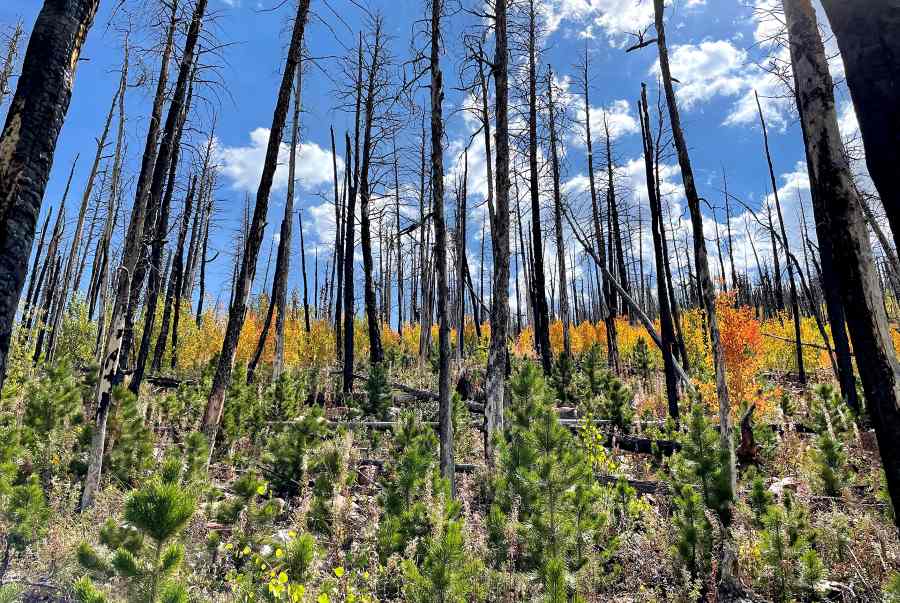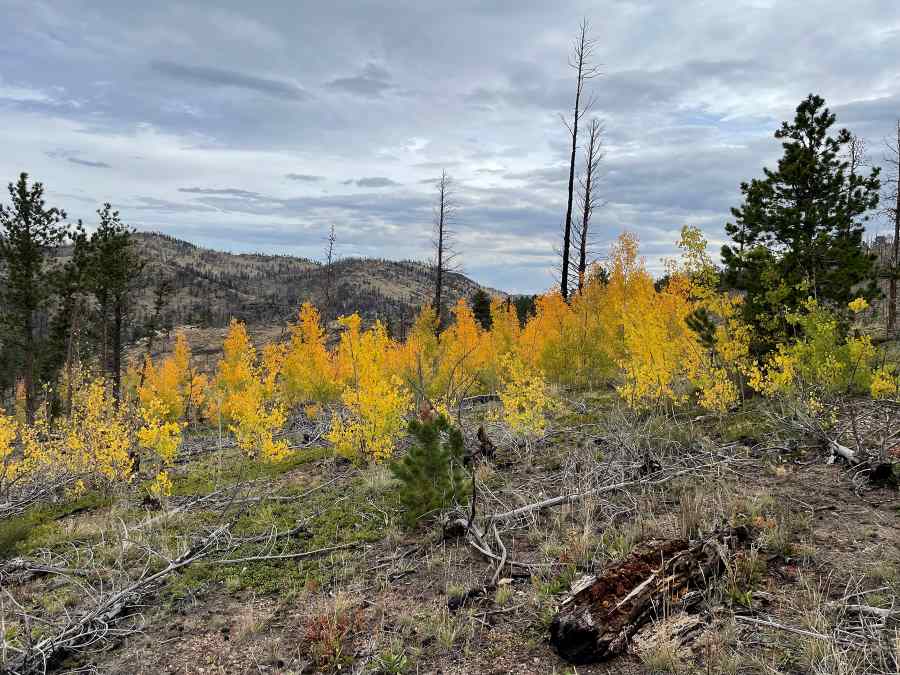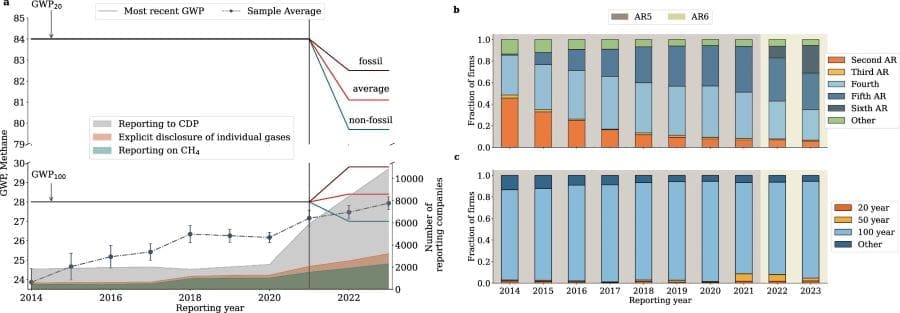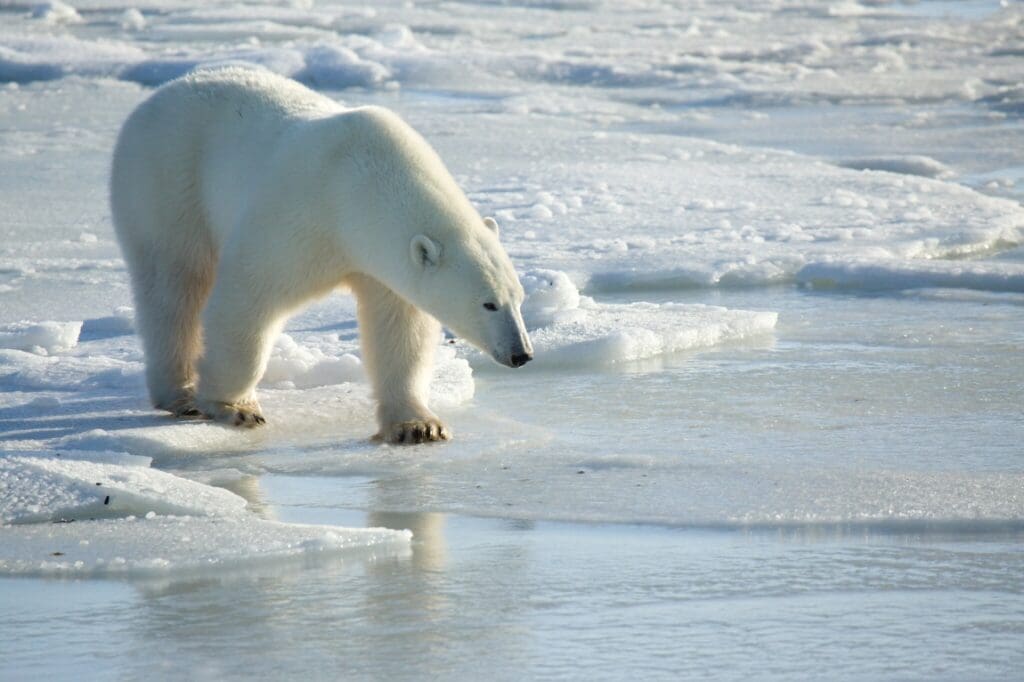Discover the latest articles from leading science journals in the Muser Press weekly roundup, showcasing impactful research published this week.
In brief:
A new system to study phytoplankton: Crucial species for planet Earth
Phytoplankton, tiny plant-like organisms in the ocean, are incredibly important for life on Earth. They’re a major food source for many sea creatures and produce almost half the oxygen we breathe. They also help control the climate by soaking up a lot of carbon dioxide, a gas that contributes to global warming.

Scientists want to learn more about how these phytoplankton use sunlight to make energy and oxygen, which can be useful in the context of environmental monitoring during global climate change. However, it’s tricky to study this because the usual methods only give an overall average for a large group of phytoplankton, hiding the differences between individual cells, or they only give limited measurements of individual phytoplankton.
Now, researchers at The Hebrew University of Jerusalem in Israel have come up with a new way to study these organisms. They’ve built a system that can measure the light given off by individual phytoplankton cells, which tells them how efficiently each individual is using light. This new technique will help scientists better understand how different types of phytoplankton react to changes in their environment.
The work will be presented at the 69th Biophysical Society Annual Meeting, to be held February 15 – 19, 2025 in Los Angeles.
“I look at how individual plankton react to changing conditions by looking at the light that they dispose of—or in scientific terms I look at fluorescence lifetimes. Basically, it’s how the phytoplankton convert light to energy they can use later,” said Paul Harris, who led the study.
This new system uses a special microscope to get a close look at individual phytoplankton cells which are sent down tiny channels. It measures the different colors of light the cells give off, which tells scientists a lot about how they’re using light to make energy.
So far, Harris and colleagues have used the system to study three different types of phytoplankton, looking at how they change throughout the day and how they react to brighter light.
What they found is that each type of phytoplankton has its own unique way of adjusting to changes in light, kind of like how some people put on sunglasses when it’s sunny, while others might opt for a hat. Each species has its own way of dealing with light, and uses different strategies for surviving sudden changes in their conditions.
“We need to understand how these phytoplankton respond in order to predict and observe what’s happening in the oceans, especially with regard to climate change as oceans warm,” said Harris. “We hope to give some insight into how species are going to change,” he said.
The system could also help in predicting harmful algal blooms, which can spell disaster for fish and other species in the ecosystem and even poison humans if consumed. “We could use this tool to give advanced warning of algal blooms,” he pointed out.
The ability to differentiate species and determine how they are using light and energy offers a powerful tool for assessing the health and productivity of phytoplankton populations, which are essential for marine food webs and global carbon cycling.
Article Source:
Press Release/Material by Biophysical Society
Trees might need our help to survive climate change, CSU study finds
A new Colorado State University study of the interior U.S. West has found that tree ranges are generally contracting in response to climate change but not expanding into cooler, wetter climates – suggesting that forests are not regenerating fast enough to keep pace with climate change, wildfire, insects and disease.
As the climate becomes too warm for trees in certain places, tree ranges have been expected to shift toward more ideal conditions. The study analyzed national forest inventory data for more than 25,000 plots in the U.S. West, excluding coastal states, and found that trees were not regenerating in the hottest portions of their ranges – an expected outcome.

More surprising to the researchers was that most of the 15 common tree species studied were not gaining any ground in areas where conditions were more favorable, indicating that most tree species likely will not be able to move to more accommodating climates without assistance.
“Trees provide a lot of value to humans in terms of clean water, clean air, wildlife habitat and recreation,” said lead author Katie Nigro, who conducted the study as a CSU graduate student. “If forest managers want to keep certain trees on the landscape, our study shows where they can still exist or where they might need help.”
Shrinking ranges were prevalent across undisturbed areas as well as those impacted by wildfire, insects and disease. Using 30 years of disturbance data, the researchers tested the idea that disturbances – particularly wildfire – might catalyze tree movement into cooler, wetter areas by killing adult trees and eliminating competition for seedlings to establish in their preferred climate zone.
“Just like us and every species, trees can only function within a certain climatic tolerance, and different species have different climatic tolerances,” Nigro said. “I thought we would find more shifts into cooler zones, especially in burned areas.”
Results of the study, published in Nature Climate Change, give a broad overview of the predominant pattern – an overall failure to regenerate in the hottest, driest portions of a tree’s range, but also failure to expand along the range’s cooler, wetter border. Nigro cautioned that it’s possible not enough time has passed to see new tree establishment in cooler, wetter areas, especially for slow-growing subalpine species. She added that more, local studies are needed to determine which species will survive where.
The paper makes the case for human-assisted tree migration because rapid warming from climate change is likely to outpace regeneration.
“One of the potential issues is that we may get bigger and bigger mismatches between where trees are living and their ideal climate,” Nigro said.
Trees seeking cooler temps face uphill battle
Increasing wildfire, insect and disease disturbances due to climate change also can prevent regeneration by removing seed sources, and seeds literally have an uphill battle in trying to gain ground upslope, where conditions are cooler.

“There’s a lot of things that prevent a seed from moving uphill, including gravity,” said co-author Monique Rocca, an associate professor of ecosystem science and sustainability. “A lot of conditions need to be in place for a tree to be able to move to cooler, wetter sites.”
She continued, “This study digs into some of the details of where trees are staying on the landscape on their own versus where we may need to intervene if our goal is to keep Western landscapes covered in trees.”
A few species fared better than others. Of the four species that continued to regenerate in the areas they already occupied regardless of climate change, wildfire, and insect and disease outbreaks, three of them are rarer on the landscape, so it is harder to accurately gauge their response, and one, Gambel oak, is a resilient, heat- and drought-tolerant resprouting species.
The study used long-term field data from the USDA Forest Service’s Forest Inventory and Analysis program, sometimes referred to as the national “tree census.” Study plots on forested areas across the nation are surveyed continuously to track individual tree growth or losses through harvest, disease or death. Kristen Pelz, analysis team lead with the inventory and analysis program, co-authored the study.
“Dr. Nigro harnessed the power of our field-collected data to show how forests are changing across the interior West – not theoretically, but today,” Pelz said. “Her work is important because it considers how things like fire and native insects interact with climate, which is essential where natural disturbances have been a primary driver of forest dynamics for millennia.”
Rather than looking at changes in the average tree range, as past studies have done, this study went a step further and examined the cold and warm margins of species’ ranges – the leading and trailing edges – which specifies how tree ranges are shifting in more detail and provides actionable insights for forest managers. If trees were expanding into cooler areas on their own, assisted migration wouldn’t be as important.
“This research can help land managers and foresters decide whether to hang on to trees in the hottest portions of their ranges for as long as possible or to transition to a more heat- and drought-tolerant system,” Nigro said, adding that sometimes assisted migration can be done with seeds of the same species that are adapted to a warmer environment.
In her current research as an Oak Ridge Institute for Science and Education postdoctoral fellow with the Rocky Mountain Research Station, Nigro is trying to identify which seeds from a single species might have the best odds of surviving under harsher climate conditions. Co-author Miranda Redmond, who was Nigro’s Ph.D. adviser at CSU, is also following up on this research by studying tree species adaptations at UC Berkeley.
“These efforts are becoming increasingly critical due to the rapid pace and scale of tree die-offs from wildfires, drought and other climate-driven disturbances, coupled with tree regeneration failures observed in many areas,” Redmond said.
Nigro added, “Planting likely will be required to keep trees on the landscape where they are most valued, and we may need to accept new ecosystems in areas that are inevitably going to change. Our future forests might look different and contain different trees than they do today.”
Journal Reference:
Nigro, K.M., Pelz, K., Rocca, M.E. et al., ‘Trailing edge contractions common in interior western US trees under varying disturbances’, Nature Climate Change 15, 196–200 (2025). DOI: 10.1038/s41558-024-02235-4
Article Source:
Press Release/Material by Colorado State University
Inconsistent reporting leads to underestimation of climate impact of methane
Companies around the world are underestimating their total greenhouse gas footprints because of inconsistent accounting standards for methane emissions, finds a new study by researchers from UCL and Imperial College London.
The new study, published in Nature Communications, found that methane emissions are being underreported by at least the equivalent of between 170 million and 3.3 billion tons of carbon over a decade, depending on the metric used in calculating the shortfall.
This means that each year, on average, companies around the world have potentially underestimated their carbon footprint by as much in total as the annual carbon emissions of the UK in 2022. This represents a significant methane emissions gap that could cost between $1.6 billion (£1.3 billion) and $40 billion (£32 billion) to fix.
Lead Author Dr Simone Cenci (UCL Bartlett School of Environment, Energy & Resources) said: “The cumulative emission gap we have documented in this work shows how important it is to standardise the reporting of methane emissions. Methane is a potent greenhouse gas and the first step towards properly addressing its effect on climate is to make sure that it’s accounted for properly.
“Adopting a global standard is in principle easy for companies as it essentially only requires the adjustment of a few conversion factors when calculating their greenhouse gas footprint. However, it requires global coordination as companies are currently often subject to fragmented regulations.”

Methane is a potent greenhouse gas that contributes to global warming at levels comparable to carbon dioxide. Though methane is emitted in much smaller quantities than carbon dioxide, it’s more efficient at trapping heat in the atmosphere. However, methane is also short-lived in the atmosphere, with a half-life of only about 10 years versus 120 years for carbon dioxide.
How much total heat a greenhouse gas traps is called its Global Warming Potential (GWP) and measured in CO2 equivalent units, or the amount of carbon dioxide gas that would cause the same amount of warming. Because of methane’s short lifespan, the conversion to CO2 is not straightforward and debate persists about how best to represent it in terms of carbon dioxide.
If methane’s impact is calculated over 20 years (GWP-20), it’s about 80 times more potent than carbon dioxide because that’s the timeframe before most of it has dissipated. However, gauged over 100 years (GWP-100) more of the methane has broken down so it’s only about 28 times as potent.
For companies estimating and reporting their greenhouse gas footprint, this lack of harmonization can cause confusion and inaccuracies, as there’s no legally binding guidance or consensus for which standard to use.
In this study the researchers compiled and analysed methane emissions from a sample of 2,846 representative companies across a range of economic sectors and countries. They found the conversions used by the companies are largely inconsistent with the guidelines of most current carbon accounting standards that recommend the same GWP-100 metric as the latest Intergovernmental Panel on Climate Change (IPCC) Assessment Report.
To see how much methane emissions might be underreported, the team substituted the companies’ various accounting conversions with the standard GWP-100 system suggested by the IPCC. Over the ten years from 2014 to 2023, methane emissions were underreported by the equivalent of about 170 million tons of carbon dioxide.
When they harmonised all reporting to the stricter GWP-20 standard, advocated by some climate scientists and used in some US jurisdictions, they found that over the same decade, methane emissions had been underestimated by the equivalent of about 3.3 billion tons of carbon dioxide.
The team also analysed the economic cost of correcting the underrepresented carbon footprints. Based on carbon prices from emission trading schemes across the globe, the cumulative cost to companies over the study’s ten years would total about $1.6 billion (£1.3 billion) to align all global companies with the GWP-100 standard, and about $40 billion (£32 billion) to align with the stricter GWP-20 standard. Companies in the energy, utilities and material sectors would face the biggest costs because they are the biggest industrial emitters of methane.
The authors note that even with their suggested corrections, total methane emissions are still being underestimated, as their calculations only focused on emissions directly produced by the companies they analysed. Other, downstream emissions, such as that which comes from sold products, were not included, and are likely significant contributors as well, particularly in the energy sector.
Journal Reference:
Cenci, S., Biffis, E., ‘Lack of harmonisation of greenhouse gases reporting standards and the methane emissions gap’, Nature Communications 16, 1537 (2025). DOI: 10.1038/s41467-025-56845-3
Article Source:
Press Release/Material by University College London
Other science articles published this week
A collaborative climate vulnerability assessment of California marine fishery species
Frawley T, Provost M, Bellquist L et al. (2025) | DOI: https://doi.org/10.1371/journal.pclm.0000574 | PLOS Climate
Recent climate change strongly impacted the population dynamic of a North American insect pest species
Boulanger Y, Desaint A et al. (2025) | DOI: https://doi.org/10.1371/journal.pclm.0000488 | PLOS Climate
On people’s perceptions of climate change and its impacts in a hotspot of global warming
Phuyal P, Kramer IM, Kadel I et al. (2025) | DOI: https://doi.org/10.1371/journal.pone.0317786 | PLoS ONE
Men deny more than they believe about climate change on Twitter (X)
Singh MK (2025) | DOI: https://doi.org/10.1371/journal.pone.0303007 | PLoS ONE
International climate adaptation assistance: Assessing public support in Switzerland
Andonova L, Zucca A et al. (2025) | DOI: https://doi.org/10.1371/journal.pone.0317344 | PLoS ONE
The impact of climate variability on agricultural employment in Mexico from 1980–2017
Sánchez Guijosa KA et al. (2025) | DOI: https://doi.org/10.1371/journal.pone.0313891 | PLoS ONE
Climate change effects on ecosystem services: Disentangling drivers of mixed responses
Delos MC, Johnson CG, Weiskopf SR, Cushing JA (2025) | DOI: https://doi.org/10.1371/journal.pone.0306017 | PLoS ONE
Long-lasting intense cut-off lows to become more frequent in the Northern Hemisphere
Mishra, A.N., Maraun, D., Schiemann, R. et al. (2025) | DOI: https://doi.org/10.1038/s43247-025-02078-7 | Communications Earth & Environment
How can the “resource curse” be broken? Transition factor flows, the urban life cycle and value chain upgrades in resource-based cities
Lu, S., Li, J., Zhang, W. et al. (2025) | DOI: https://doi.org/10.1057/s41599-025-04518-3 | Humanities and Social Sciences Communications
Projection of climate change impact on the occurrence of drought events in Poland
Ghazi, B., Salehi, H., Przybylak, R. et al. (2025) | DOI: https://doi.org/10.1038/s41598-025-90488-0 | Scientific Reports
How much do atmospheric depressions and Mongolian cyclones contribute to spring dust activities in East Asia?
Mu, F., Fiedler, S. (2025) | DOI: https://doi.org/10.1038/s41612-025-00929-w | npj Climate and Atmospheric Science
Pollution control mechanism of national water network with water quality differences based on differential game and case study
Yang, Y., Yang, Y., Yang, S. et al. (2025) | DOI: https://doi.org/10.1038/s41598-025-89282-9 | Scientific Reports
Present and future limits to climate change adaptation
Callahan, C.W. (2025) | DOI: https://doi.org/10.1038/s41893-025-01519-7 | Nature Sustainability
Political enablers of ambitious climate policies: a framework and thematic review
Montfort, S., Fesenfeld, L., Ingold, K. et al. (2025) | DOI: https://doi.org/10.1038/s44168-024-00206-1 | npj Climate Action
Make African grasslands climate-change resilient
Akpensuen, T.T., Cartmill, A.D., Pérez-Márquez, S. et al. (2025) | DOI: https://doi.org/10.1038/s43247-025-02109-3 | Communications Earth & Environment
Climate change effects on submarine groundwater discharge and regional variations along the Korean Peninsula
Jung, H.C., Yoon, Y. (2025) | DOI: https://doi.org/10.1038/s43247-025-02084-9 | Communications Earth & Environment
Climate action contributor and carbon space appropriator: national image construction of China in dual-carbon commitment from Indian media’s perspective
Wu, Y., Zhao, X. (2025) | DOI: https://doi.org/10.1057/s41599-025-04529-0 | Humanities and Social Sciences Communications
Global Daily Column Average CO2 at 0.1° × 0.1° Spatial Resolution Integrating OCO-3, GOSAT, CAMS with EOF and Deep Learning
Antezana Lopez, F.P., Zhou, G., Jing, G. et al. (2025) | DOI: https://doi.org/10.1038/s41597-024-04135-w | Scientific Data
Preserving carbon dioxide removal to serve critical needs
Shindell, D., Rogelj, J. (2025) | DOI: https://doi.org/10.1038/s41558-025-02251-y | Nature Climate Change
Nitrogen addition restricts key soil ecological enzymes and nutrients by reducing microbial abundance and diversity
Li, X., Su, L., Jing, M. et al. (2025) | DOI: https://doi.org/10.1038/s41598-025-87327-7 | Scientific Reports
Nitrogen addition restricts key soil ecological enzymes and nutrients by reducing microbial abundance and diversity
Li, X., Su, L., Jing, M. et al. (2025) | DOI: https://doi.org/10.1038/s41598-025-87327-7 | Scientific Reports
Mapping facade materials utilizing zero-shot segmentation for applications in urban microclimate research
Tarkhan, N., Klimenka, M., Fang, K. et al. (2025) | DOI: https://doi.org/10.1038/s41598-025-86307-1 | Scientific Reports
Advancing green hydrogen production in Algeria with opportunities and challenges for future directions
Benchenina, Y., Zemmit, A., Bouzaki, M.M. et al. (2025) | DOI: https://doi.org/10.1038/s41598-025-90336-1 | Scientific Reports
Mitigation potential of urban greening during heatwaves and stormwater events: a modeling study for Karlsruhe, Germany
Pace, R., Endreny, T.A., Ciolfi, M. et al. (2025) | DOI: https://doi.org/10.1038/s41598-025-89842-z | Scientific Reports
Intensified Atlantic multidecadal variability in a warming climate
Li, S., Wu, L., Wang, Y. et al. (2025) | DOI: https://doi.org/10.1038/s41558-025-02252-x | Nature Climate Change
Linear and non-linear impact of key agricultural components on greenhouse gas emissions
Ahmed, N., Xinagyu, G., Alnafissa, M. et al. (2025) | DOI: https://doi.org/10.1038/s41598-025-88159-1 | Scientific Reports
Formation mechanisms of the Central and Eastern Atlantic Niño
Liu, H., Zhang, L., Capotondi, A. et al. (2025) | DOI: https://doi.org/10.1038/s41612-025-00938-9 | npj Climate and Atmospheric Science
Featured image credit: kjpargeter | Freepik




